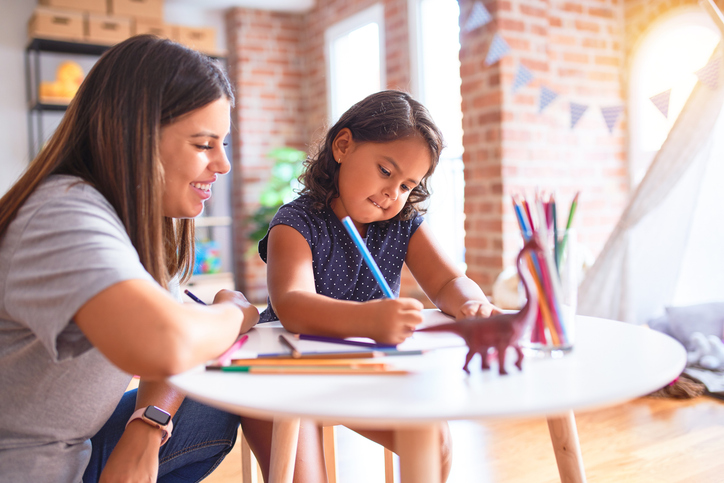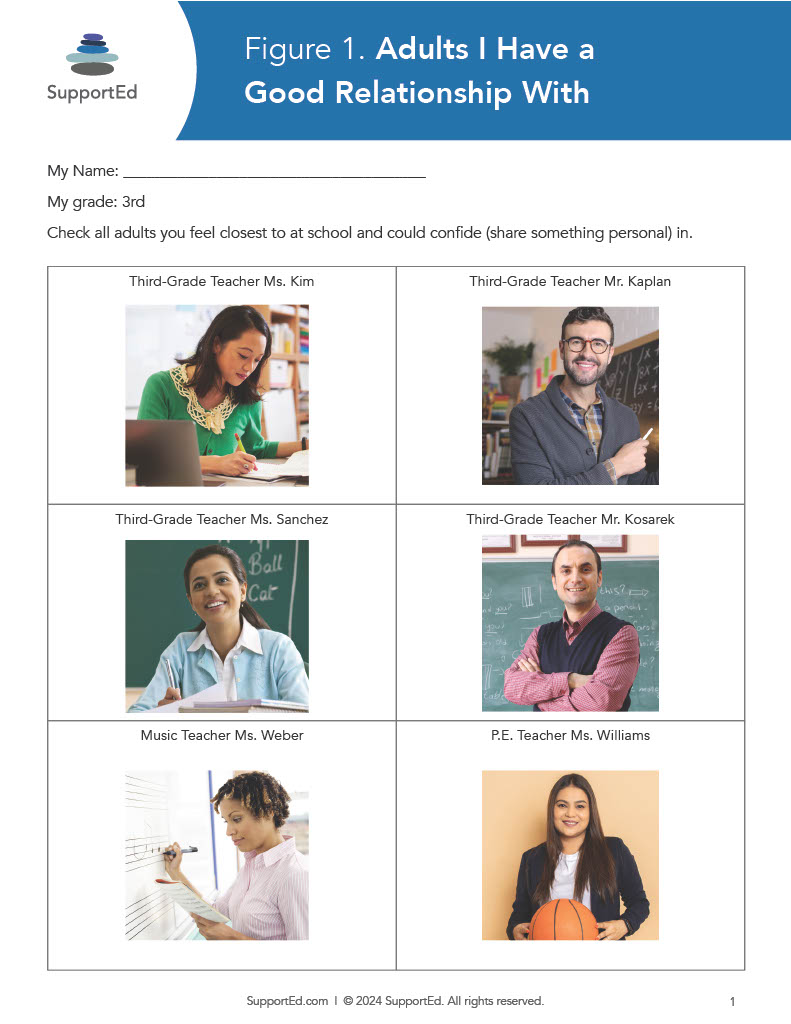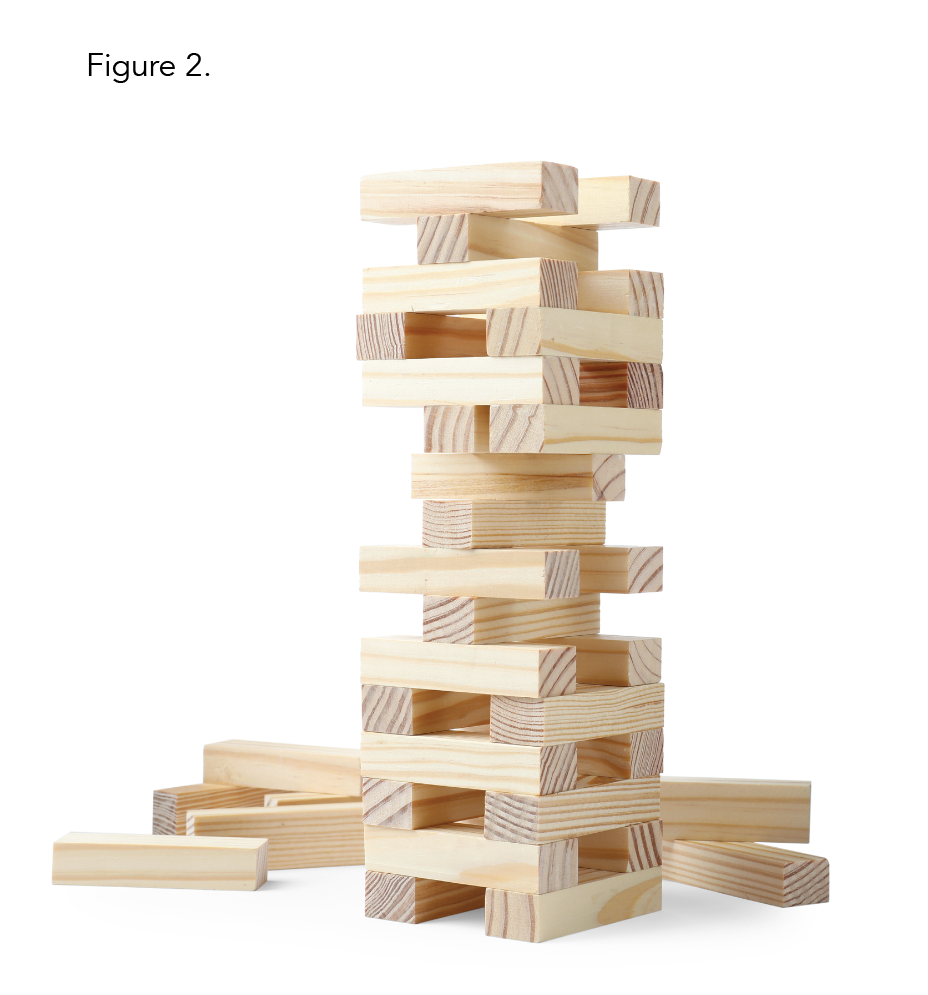

Social–emotional learning’s (SEL’s) reach has expanded significantly over the past decade and has especially accelerated during the last few years. High-quality SEL can support students’ general well-being as a pathway to improved academic outcomes (Durlak et al., 2011; Zins and Elias, 2007). With multilingual learners comprising nearly 23% of the US student-age population and rising (National Center on Education Statistics, 2022), as well as the numerous challenges MLs face in receiving an equitable and excellent education, it is important to ask the question of how inclusive SEL initiatives and programs are of multilingual learners.
The Collaborative for Academic, Social, and Emotional Learning (CASEL) defines social and emotional learning as “the process through which all young people and adults acquire and apply the knowledge, skills, and attitudes to develop healthy identities, manage emotions and achieve personal and collective goals, feel and show empathy for others, establish and maintain supportive relationships, and make responsible and caring decisions” (2020).
Their framework is made up of these five competencies:
1. Self-awareness
2. Self-management
3. Social awareness
4. Relationship skills
5. Responsible decision-making
As well-known as CASEL’s SEL work is, it does not seem to have been developed with MLs in mind. My co-author Mindi Teich and I decided to address this lack of inclusion of MLs in most SEL frameworks by writing a book titled Social Emotional Learning for Multilingual Learners: Essential Actions for Success,1 which will be published by Corwin in April 2024. We believe that educators who work directly with students must adapt SEL programming to ensure it is culturally relevant and accessible for diverse learners (Staehr Fenner and Teich, in press).2 We share a new framework aligned with MLs’ strengths and needs that is specifically designed to seamlessly integrate SEL into content instruction as a way to foster MLs’ well-being, increase engagement with content, and promote language development.3
In my recent work coaching educators of MLs, I witnessed the academic and social growth in students whose teachers were intentional in developing relationships with and among MLs, which is one component of SEL. In this article, I will first provide an overview of unique considerations in SEL for MLs, and then narrow my focus to explore how educators can support MLs’ development of relationship skills. To do so, I will summarize relevant research on relationship building for MLs and then share two tools to foster relationships with and among MLs.
Unique Considerations for SEL Competencies for MLs
When Teich and I dig deeper into the definitions of each CASEL SEL competency, we note that there is wide room for interpretation based on educators’ own cultures and personal lived experiences. Considering that White, middle-class women make up the majority of educators in the US (Taie and Lewis, 2022), it is not a reach to believe that in many classrooms the SEL competencies will be interpreted from the perspective of this demographic. It is crucial for all educators, irrespective of their backgrounds, to consider how multilingual learners’ diverse cultural and linguistic backgrounds can impact their understanding and engagement with these SEL competencies. For example, if educators come from an individualist culture like the US, they may not be aware that many MLs have been raised in collectivist cultures that value the group over the individual, possibly making self-reflection and self-advocacy more of a challenge.
In our SEL for MLs framework, Teich and I first provide a summary of considerations for educators to more deeply understand how each SEL competency may look different for MLs. We then provide four practical educator actions to foster MLs’ access to each competency. I will illustrate these unique considerations and tools for MLs through the SEL competency of relationship skills. First, let’s look at some of the research that undergirds the importance of relationship building for MLs.
Supporting MLs’ Relationship Skills
The relationship skills competency is defined by CASEL as “the abilities to establish and maintain healthy and supportive relationships and to effectively navigate settings with diverse individuals and groups.”
CASEL’s associated skills for this competency include the following:
• Communicating effectively
• Developing positive relationships
• Demonstrating cultural competency
• Practicing teamwork and collaborative problem-solving
• Resolving conflicts constructively
• Resisting negative social pressure
• Showing leadership in groups
• Seeking or offering support and help when needed
• Standing up for the rights of others
After reading the description of this competency and the associated skills, what do you think might be missing for MLs to have access to this competency?
Why It’s Important to Support MLs’ Relationship Skills
The benefits of teachers developing relationships with multilingual learners are numerous. Here are just a few: Relationships are a precursor for authentic, deep learning to occur and can lead to positive learning outcomes and higher levels of self-esteem for multilingual learners (Flint et al., 2019).
MLs’ connections to teachers correspond with students’ increased motivation and academic effort (Green et al., 2008).
When multilingual learners are aware of teachers’ warmth, they are shown to achieve at higher levels in English language arts and literacy (Banse and Palacios, 2018; López, 2012).
MLs’ relationships with each other can yield multiple positive results. ML peer interaction offers opportunities for scaffolding, supporting learning and guiding student interaction (Kibler, 2017).
Peer relationships that promote academic English positively influenced MLs’ academic oral language as well (Carhill-Poza, 2015).

ML Considerations and Educator Actions
To support MLs in building relationship skills, it’s essential to recognize that MLs’ patterns of interaction and communication, including nonverbal communication, may be different than those of their peers and teachers. These differences can be extra challenging if students are learning English, leaving room for potential misunderstandings and misinterpretations of interactions and attempts at relationship building (Staehr Fenner and Teich, in press). We suggest four educator actions to support MLs’ relationship building and note that this is not an exhaustive list but instead a starting point. Due to the brevity of this article, I share one tool that aligns with each of the first two educator actions. For the third and fourth educator actions, I share the importance of the action and a description of a tool included in our book that aligns with that action.
Educator Action 1: Identify one staff member for each ML who will actively build a relationship with that student in which the student feels safe and supported, by showing vulnerability, sharing interests, and demonstrating concern for the student and their family.
Tool 1: Adults I Have a Good Relationship With
This tool can help MLs determine which adults in the building they feel they have a connection with, in order to build on those relationships. Teachers may be surprised to learn which adults some of their MLs have indicated. Conversely, the tool will also help educators find out which MLs have not yet developed a relationship with any adults, which is especially important information to be aware of so that extra support can be given in developing relationships with those students. Figure 1, “Adults I Have a Good Relationship With,” is an example from the third grade, but this tool can be adapted for students in different grade levels. We were sure to include images of school staff and sentence starters as scaffolds for MLs to complete this form. Directions should be clear to students, and MLs who are literate in their home languages can receive translated versions.
Educator Action 2: Support, encourage, and affirm students’ ways of communicating, including use of home languages.
Tool 2: Sample Jenga Relationship-Building Questions and Sentence Frames

This tool complements the use of Jenga games in small groups to foster relationship building among students so they can get to know each other a little more before they discuss academic content. Jenga (Figure 2) is a game made up of wooden blocks in which players build a tower out of the blocks and then take turns removing one block at a time until the tower falls. Using a game such as this supports, encourages, and affirms MLs’ ways of communicating while creating a sense of community and leveraging MLs’ oral skills and students’ collectivist, group-focused ways of interacting. It’s also simply a lot of fun for students.
In this SEL-based version of the game, each Jenga block is numbered, and there is also a numbered list of questions for students to ask each other (see Figure 3). When a player removes a block, they ask their group the question corresponding to the number on the block, and all group members are encouraged to respond orally, repeating the process until the structure collapses.
While this game can be used at the beginning of the year as an icebreaker-type activity, you can also use it throughout the school year with questions adjusted for the time of year. You can also adapt the questions as a way to review and reinforce content and academic language while simultaneously building student relationships (e.g., a review of states of matter in chemistry). Teachers can offer translated, culturally relevant questions and sentence stems for MLs who are literate in their home languages, and MLs should be encouraged to respond in their home languages if they feel more comfortable doing so. Figure 3 is a sample list of community-building questions in English with ML supports embedded.

We caution you to avoid questions that may be triggering for students (e.g., questions about family for a student who you may know is separated from their family). In addition, it would be helpful for the teacher to model the process and allow students to pass if they don’t feel comfortable answering a particular question.
Educator Action 3: Teach about nonverbal communication, including differences between the dominant setting and MLs’ cultures, while validating MLs’ nonverbal communication patterns.
It is important for MLs as well as their teachers to be aware of the way in which culture shapes nonverbal communication, since nonverbal communication plays a large role in the way we make meaning. One tool we have developed to support this is the Pragmatics Awareness-Building Tool, which allows MLs to reflect on the ways certain nonverbal interactions take place in their home cultures and compare them with US school expectations.
Educator Action 4: Model, practice, and scaffold self-advocacy skills, while recognizing self-advocacy may not be expected in students’ cultures.
Expectations for self-advocacy vary widely in MLs’ home cultures, often with teachers being viewed as revered authority figures who are never to be questioned. In the US, we expect students to self-advocate, but this concept may not feel comfortable for MLs.
Our Data Day and Discussion Day tools walk secondary-level MLs through a process of exploring how they approach the concept of self-advocacy, then guide them in collecting data on each class they are taking, noting where work may be missing or could be improved. Next, they complete scaffolded role-plays to prepare for discussions with any teachers they may need to check in with to self-advocate. Finally, they have time set aside to connect with their teachers as needed to discuss their schoolwork and then reflect on this process.
Final Thoughts
In this article, I first shared the sense of urgency around integrating SEL practices that are relevant for MLs and then underscored the need to be intentional about fostering relationship building for MLs with educators and also with their ML peers. After providing a brief snapshot of research on relationship building with MLs, I shared two practical tools to help develop relationships with MLs. I am hopeful that you have some new ideas for ways to intentionally foster your current MLs’ relationships and develop relationships with MLs who may enroll in your schools this spring.
References
Banse, H., and Palacios, N. (2018). “Supportive Classrooms for Latino English Language Learners: Grit, ELL status, and the classroom context.” Journal of Educational Research, 111(6), 645– 656. https://doi.org/10.1080/00220671.2017.1389682
Carhill-Poza, A. (2015). “Opportunities and Outcomes: The role of peers in developing the oral academic English proficiency of adolescent English learners.” Modern Language Journal, 99(4), 678–695. www.jstor.org/stable/44135289
Collaborative for Academic, Social, and Emotional Learning (CASEL). (2020). “CASEL’s SEL Framework: What are the core competence areas and where are they promoted?” https://casel.org/casel-sel-framework-11-2020/?view=true
Durlak, J. A., Weissberg, R. P., Dymnicki, A. B., Taylor, R. D., and Schellinger, K. B. (2011). “The Impact of Enhancing Students’ Social and Emotional Learning: A meta-analysis of school-based universal interventions.” Child Development, 82(1), 405–432. https://doi.org/10.1111/j.1467-8624.2010.01564.x
Flint, P., Dollar, T., and Stewart, M. A. (2019). “Hurdling over Language Barriers: Building relationships with adolescent newcomers through literacy advancement.” Journal of Adolescent and Adult Literacy, 62(5), 509–519. https://doi.org/10.1002/jaal.927
Green, G., Rhodes, J., Hirsch, A. H., Suárez-Orozco, C., and Camic, P. M. (2008). “Supportive Adult Relationships and the Academic Engagement of Latin American Immigrant Youth.” Journal of School Psychology, 46(4), 393–412. https://doi.org/10.1016/j.jsp.2007.07.001
Kibler, A. K. (2017). “Peer Interaction and Learning in Multilingual Settings from a Sociocultural Perspective: Theoretical insights.” International Multilingual Research Journal, 11(3), 199–203. https://doi.org/10.1080/19313152.2017.1328970
López, F. A. (2012). “Moderators of Language Acquisition Models and Reading Achievement for English Language Learners: The role of emotional warmth and instructional support.” Teachers College Record, 114(8), 1–30. https://doi.org/10.1177/016146811211400803
National Center on Education Statistics (NCES). (2022). “English Learners in Public Schools.” https://nces.ed.gov/programs/coe/pdf/2022/cgf_508.pdf
Staehr Fenner, D., and Teich, M. (in press). Social–Emotional Learning for Multilingual Learners: Essential Actions for Success. Corwin.
Taie, S., and Lewis, L. (2022). Characteristics of 2020–21 Public and Private K–12 School Teachers in the United States: Results from the National Teacher and Principal Survey—First Look. NCES 2022- 113. National Center for Education Statistics. https://nces.ed.gov/pubsearch/pubsinfo.asp?pubid=2022113
Links
1. https://supported.com/sel-mls
2. https://supported.com/culturally-responsive-teaching
3. https://supported.com/sel
Diane Staehr Fenner, PhD, is the author of several books on multilingual learner education and president of SupportEd, a woman-owned small business that provides professional development, technical assistance, and curriculum support to empower MLs and their educators. You can reach her at Diane@SupportEd.com or on social media at @DStaehrFenner.






